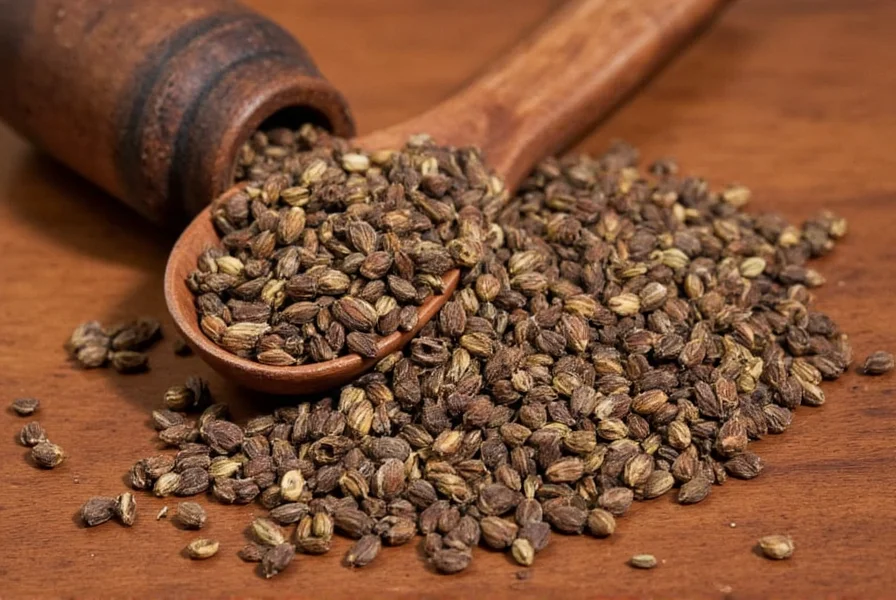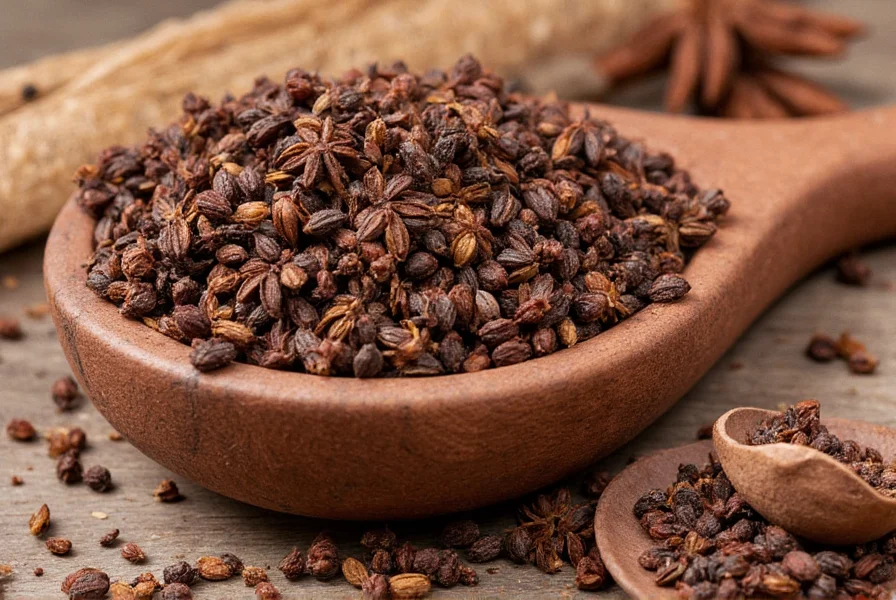Anise has earned its place as one of the world's most enduring spices, with archaeological evidence showing its use dating back to ancient Egyptian times. This versatile seed offers more than just flavor—it carries cultural significance and potential health properties that continue to interest chefs, herbalists, and researchers alike. Understanding the botanical identity, culinary applications, and scientific research surrounding anise provides valuable context for anyone exploring this aromatic spice.
Botanical Profile and Historical Significance
Anise (Pimpinella anisum) belongs to the Apiaceae family, which includes carrots, celery, and parsley. Native to the eastern Mediterranean region and Southwest Asia, this annual plant grows to about 2 feet tall and produces伞-shaped clusters of white flowers that yield the familiar aniseed. The primary compound responsible for anise's characteristic flavor is anethole, which constitutes 80-90% of its essential oil content.
Historical records show anise was highly valued in ancient civilizations. Egyptian papyri from 1550 BCE mention anise as a medicinal plant, while Roman naturalist Pliny the Elder documented its use for improving breath and aiding digestion. During the Middle Ages, anise became a staple in European apothecaries and kitchens, often used to flavor breads and prevent spoilage. The spice traveled along ancient trade routes, becoming integral to culinary traditions from Mexico to India.

Anise Versus Star Anise: Clearing the Confusion
One of the most common misunderstandings in spice knowledge involves distinguishing true anise from star anise. Despite their similar flavors and names, these are completely different botanical entities with distinct properties.
| Characteristic | Anise (Pimpinella anisum) | Star Anise (Illicium verum) |
|---|---|---|
| Botanical Family | Apiaceae (carrot family) | Schisandraceae |
| Origin | Mediterranean region | China and Vietnam |
| Physical Form | Small, grayish-brown crescent seeds | Star-shaped fruit pods (8 points) |
| Primary Flavor Compound | Anethole (80-90% of essential oil) | Anethole (90% of essential oil) |
| Shikimic Acid Content | Negligible | High (used in Tamiflu production) |
| Traditional Medicinal Uses | Digestive aid, respiratory support | Cold and flu remedies |
While both spices share the compound anethole that creates their licorice-like flavor, they come from entirely different plant families. True anise seeds are small and oval, while star anise refers to the star-shaped fruit of a tree native to China. This distinction matters particularly for those with allergies or specific health concerns, as star anise contains shikimic acid used in pharmaceutical production, whereas true anise does not.
Culinary Applications of Anise Seeds
Anise seeds bring their distinctive flavor to cuisines worldwide. In Mediterranean cooking, bakers incorporate anise into biscotti, pizzelles, and Greek breads. Middle Eastern cuisine features anise in spice blends like baharat and in traditional liqueurs such as arak and ouzo. Mexican cooking uses anise in mole sauces and certain chocolate preparations, while Indian cuisine incorporates it into some garam masala variations.
When working with anise in recipes, consider these practical tips for maximizing flavor:
- Toast whole seeds briefly in a dry pan to intensify their aroma before grinding
- Add ground anise toward the end of cooking to preserve volatile flavor compounds
- Pair with complementary flavors like citrus, fennel, and warm spices
- Use in both sweet and savory applications—from fruit compotes to braised meats
Nutritional Profile and Potential Health Benefits
Nutritionally, anise seeds pack a surprising punch relative to their size. One tablespoon (7g) of anise seeds contains approximately:
- 23 calories
- 1g protein
- 1g fat
- 3g carbohydrates
- 1g fiber
- Significant amounts of manganese, iron, and calcium
Traditional medicine systems have long recognized anise for potential therapeutic properties. Modern research suggests several promising areas:
A 2020 review published in the journal Molecules examined anise's phytochemical composition and found compelling evidence for its traditional use as a digestive aid. The study noted that anethole, the primary compound in anise, demonstrates antispasmodic effects on gastrointestinal muscles. Another study in Phytotherapy Research documented anise's potential respiratory benefits, with compounds showing expectorant properties that may help clear mucus from airways.
Researchers continue investigating anise's potential effects on hormonal balance, particularly regarding menstrual discomfort. A randomized controlled trial published in Complementary Therapies in Medicine found that anise extract significantly reduced menstrual pain compared to placebo, suggesting possible phytoestrogenic activity.

Practical Usage and Storage Recommendations
To maintain optimal flavor and potency, proper storage of anise seeds proves essential. Store whole anise seeds in an airtight container away from light and heat. Under these conditions, they typically retain peak quality for 2-3 years. Ground anise loses potency more quickly—usually within 6 months—so many culinary experts recommend grinding seeds as needed rather than purchasing pre-ground versions.
When substituting anise in recipes, consider these equivalencies:
- 1 teaspoon whole anise seeds = ¾ teaspoon ground anise
- 1 teaspoon anise extract = 1 tablespoon whole seeds
- For star anise substitution: 1 star = ½ teaspoon ground anise (note flavor differences)
Gardeners interested in growing anise should note that Pimpinella anisum prefers well-drained soil and full sun. The plants typically mature in 120-140 days and require careful harvesting when seed pods turn grayish-brown but before they shatter. Due to their sensitivity to transplanting, many growers recommend direct sowing of anise seeds outdoors after the last frost.
Safety Considerations and Potential Interactions
While generally recognized as safe when consumed in typical food amounts, anise warrants some considerations. The compound anethole shows estrogenic activity in laboratory studies, so individuals with hormone-sensitive conditions should consult healthcare providers before consuming large amounts or taking anise supplements.
Some people experience allergic reactions to anise, particularly those with existing allergies to plants in the Apiaceae family (carrots, celery, parsley). Symptoms may include skin rash, digestive upset, or respiratory issues. Additionally, anise may interact with certain medications, particularly those metabolized by the CYP3A4 enzyme system.
Pregnant women should exercise caution with medicinal amounts of anise, as high doses might stimulate uterine contractions. However, typical culinary use in cooking and baking presents no known risks during pregnancy.
Conclusion
Anise represents far more than just a flavoring agent—it embodies centuries of culinary tradition, cultural significance, and potential health applications. Understanding the distinction between true anise and star anise prevents confusion in both cooking and potential therapeutic use. Whether you're a home cook exploring new flavors, a gardener interested in growing heritage plants, or someone curious about traditional botanical remedies, anise offers a fascinating subject with practical applications across multiple domains. Its enduring popularity across diverse cultures speaks to the unique sensory experience and potential benefits this ancient spice continues to provide.
Frequently Asked Questions
What's the difference between anise and fennel?
While both anise and fennel share a licorice-like flavor due to the compound anethole, they come from different plants. Anise (Pimpinella anisum) produces small, grayish-brown seeds, while fennel (Foeniculum vulgare) yields larger, greener seeds. Fennel also refers to the bulb vegetable commonly used in Mediterranean cuisine, whereas anise refers specifically to the seed. Culinary applications differ slightly, with fennel having a milder flavor profile better suited for savory dishes.
Can I use anise extract instead of whole seeds in recipes?
Yes, anise extract makes an effective substitute for whole seeds. Use 1 teaspoon of anise extract for every tablespoon of whole anise seeds called for in a recipe. Because extracts contain concentrated flavor compounds, start with less than you think you need and adjust to taste. Keep in mind that extracts work best in liquid-based recipes like syrups, sauces, and baked goods where the flavor can distribute evenly.
Does anise have any scientifically proven health benefits?
Research indicates several potential health benefits of anise. Studies show anise may help with digestive issues due to its antispasmodic properties, and some evidence suggests respiratory benefits from its expectorant qualities. A clinical trial published in Complementary Therapies in Medicine found anise extract reduced menstrual pain significantly compared to placebo. However, most research remains preliminary, and anise should not replace conventional medical treatment for health conditions.
How can I tell if my anise seeds have gone bad?
Fresh anise seeds should have a strong, sweet, licorice-like aroma. If your seeds smell musty, stale, or have little scent when crushed, they've likely lost potency. Visually, they should be grayish-brown; significant darkening may indicate age. While not dangerous to consume, old anise seeds will provide minimal flavor. Properly stored in an airtight container away from light and heat, whole anise seeds maintain quality for 2-3 years.











 浙公网安备
33010002000092号
浙公网安备
33010002000092号 浙B2-20120091-4
浙B2-20120091-4